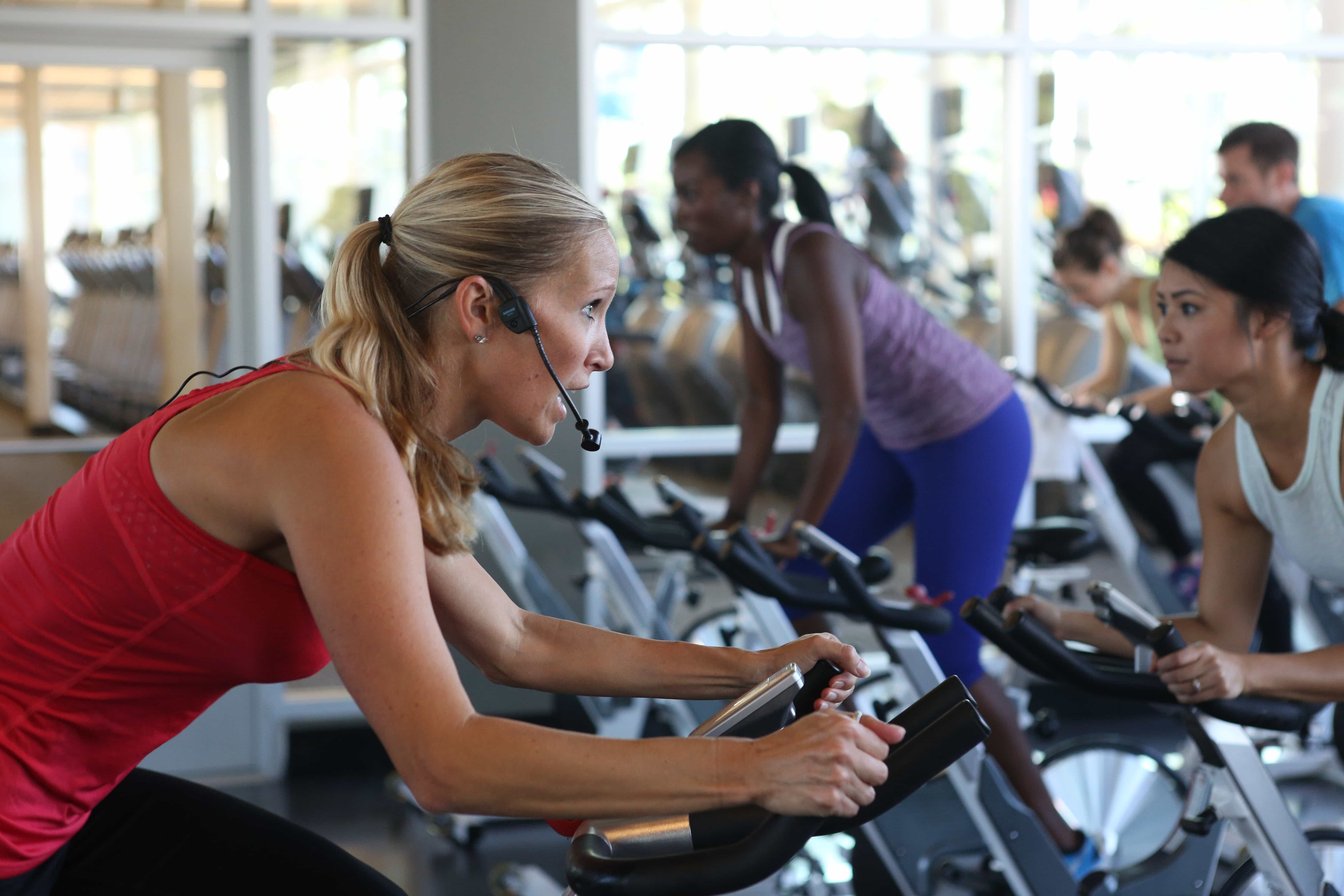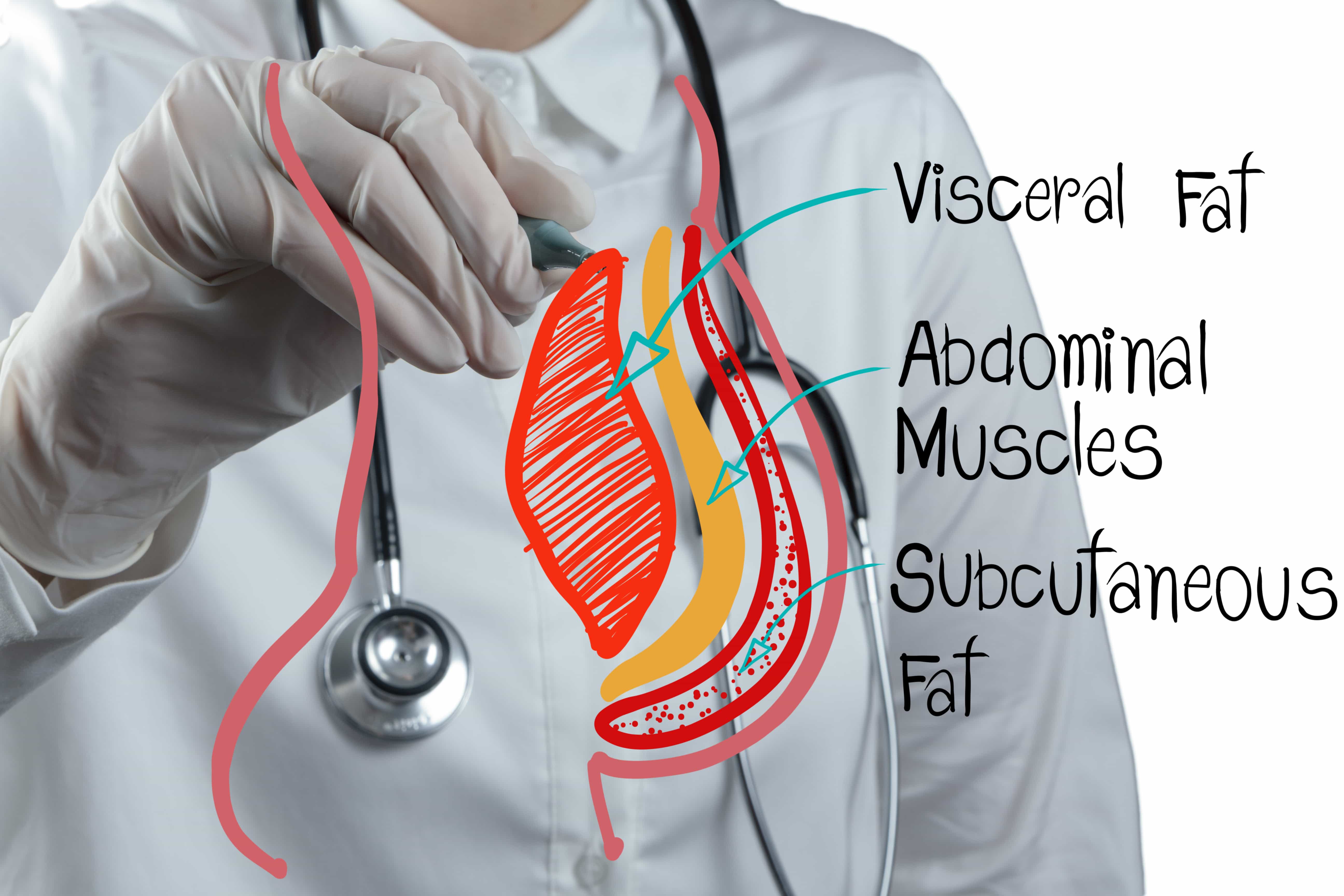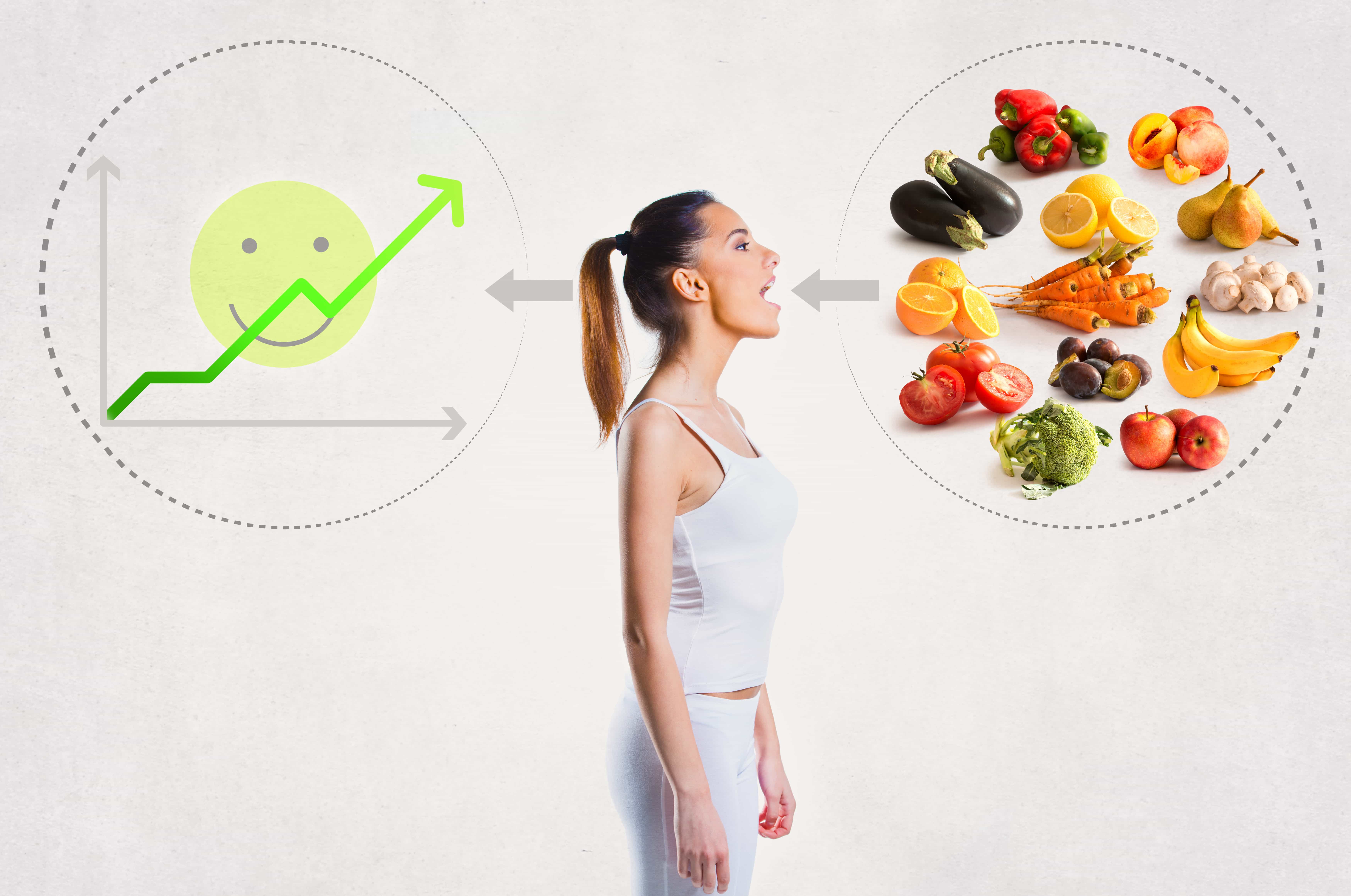How Laughter Improves Your Health
Laughter can encourage blood flow, heighten your immunity, increase your intellectual performance, and even improve your quality of sleep.

November 1st marks the start of American Diabetes Month, which draws nationwide attention to a disease that affects far too many. According to the Centers for Disease Control (the CDC), “more than 29 million people in the United States have diabetes.”1 What may even be more alarming is the fact that “one in four people with diabetes [doesn’t even] know he or she has it.” 2 This opens the door to many questions: Why is this? What is diabetes? What can we do to help prevent it?
Diabetes: A Deeper Look
If you feel like diabetes isn’t a health issue you have to worry about, you may be incorrect. More than 1 in 3 U.S. adults are considered prediabetic.3 That equates to roughly 86 million American adults. When you consider the fact that 29 million have already been diagnosed, and 86 million are on the borderline, that’s about 115 million Americans that are struggling with blood sugar levels. However, the diabetes epidemic isn’t just confined to the U.S. About 11 million Canadians are living with the disease or are considered pre-diabetic.4


The American Diabetes Association shares some common diabetes symptoms5:
If you notice yourself experiencing any of these symptoms, or you have an increased risk of diabetes due to family history, consult your doctor or local physician. It never hurts to be proactive and get tested. In fact, the earlier you recognize the signs, the sooner you can begin making healthy changes, which may help save your life.
Type 1 vs. Type 2 Diabetes
Type 1 diabetes, previously known as juvenile diabetes, typically affects children and young adults and continues into adulthood. This type of diabetes affects the body’s ability to produce insulin, and insulin is necessary to help get glucose from the bloodstream into the cells of the body. Insulin therapy can help with this.
Type 2 diabetes is when the body causes blood sugar levels to rise higher than normal. This is also known as hyperglycemia. This is the most common form of diabetes. If you are diagnosed with type 2 diabetes, the body struggles with insulin resistance. While the pancreas attempts to make extra insulin to make up for it, over time it is unable to keep up, and the body’s insulin levels can’t keep the blood glucose at normal levels.

It’s Not Too Late
The good news is diabetes is not the end all – though that’s not to say it shouldn’t be taken seriously. Diabetes can be managed through a healthy change in diet, physical activity, and the use of medications that help regulate and lower blood sugar levels. If you are diabetic or were recently diagnosed with diabetes and want more information after consulting with your physician, check out the extremely helpful Food & Fitness tips shared by the American Diabetes Association. You may also want to look into investing into a CGM (continuous glucose monitor), FDA approved, which tracks your blood sugar levels both day and night. Readings are collected every 5 to 15 minutes and the device helps you stay up-to-date on your blood sugar levels. The data collected can better help its users manage their condition. Some monitors still require a finger stick to help the monitor stay accurate. The best way to find what’s right for you is to consult your doctor or physician.
How Physical Activity Helps
Exercise of any form helps reduce your risk for diabetes, and can help reduce symptoms in those who already have it. That’s right, exercise of any form! The key is movement. Keep your body moving. Staying active helps burn calories and keeps the body feeling good. No, you don’t have to run a marathon, or climb to the top of Mount Hood in Oregon (but hey, those could be future goals) — start with little exercises you enjoy. Do you not really enjoy the thought of exercising? Well, did you know that taking the dog for a walk counts? Walking through the mall counts, pushing your child on the swing counts, and even household chores like painting a room, or raking the leaves counts!
If you feel like stepping up your physical fitness game, try an aerobics class.* LA Fitness offers plenty of Group Fitness classes, all varying in exercises types, some of which cover cardio, while others work on strength training – some even cover both! Find a class that fits you and your personality here. A quick reminder you may find helpful is this: You’re not in this alone. Have friends and family join you at the gym. Establish a network that is going to help positively influence your life. Fitness starts with you, but can spread like wildfire among those you associate with.
You can take steps to take control of your health. Never forget that.
Feel like committing today to a new and healthy life? Share it with our community, here! Who knows, you could be the next LA Fitness Member Spotlight success story. We believe in you, now are you ready to believe in yourself?
*Class offerings vary by facility.
Sources:
Laughter can encourage blood flow, heighten your immunity, increase your intellectual performance, and even improve your quality of sleep.
Good health starts with good hygiene practices. These 10 common items you encounter in your day-to-day are covered with germs.
For International Women’s Day, we’d like to contribute to the day’s spotlight on women by discussing an important piece of women’s health: mental health.

Leg day and chest day and arm day… oh my! When you’re making it a priority to get your body feeling and looking its greatest, you may find yourself pushing harder than ever to achieve your goals. However, all work and no rest can do the body more harm than good. When you’re putting in the extra time and commitment, don’t waste those epic workouts and tough dietary restrictions by overexerting your body. By not allowing the body enough adequate rest and recovery time, a string of unhealthy issues could start to ensue.
Consider the benefits of rest days below:
Things to consider:

Tip Takeaway: Don’t worry about taking a day off, “in general, it takes your body almost two weeks of non-activity before you start losing a noticeable amount of your progress or performance level”.2 How do you choose to spend your rest days? Share in the comments below!
Sources:
Laughter can encourage blood flow, heighten your immunity, increase your intellectual performance, and even improve your quality of sleep.
Good health starts with good hygiene practices. These 10 common items you encounter in your day-to-day are covered with germs.
For International Women’s Day, we’d like to contribute to the day’s spotlight on women by discussing an important piece of women’s health: mental health.


Stress and cortisol. They seem to go hand in hand. Why? Well, cortisol, typically known as the “stress hormone” is released when our bodies go into a state of fight-or-flight. This response can also result from physical or psychological stress. When our bodies are experiencing a stressor, our adrenal glands, located above the kidneys, discharge cortisol. Cortisol floods our bodies with glucose, giving our bodies an immediate source of energy.
That doesn’t seem too bad, does it? It’s just energy after all.
The problem is, under constant stress our bodies can start elevating cortisol levels. This results in glucose being consistently pumped throughout our bodies, which can lead to increased blood sugar levels.1 If you’ve ever found yourself wondering why you’re not losing that stubborn belly fat, your cortisol levels could be a contributing factor because “cortisol can mobilize triglycerides from storage and relocate them to visceral fat cells (those under the muscle, deep in the abdomen).”2 That stored fat hiding under muscle is what causes stubborn belly fat.
But, before giving cortisol a bad name, remember that it’s there for a reason. Proper levels of cortisol can help regulate blood pressure, assist with anti-inflammatory responses, help with blood sugar maintenance, and aid in proper glucose metabolism and proper immune function.3 All-in-all, that pesky little stress hormone on its own isn’t all that bad and other factors can play a part in stress and weight gain.
Outside factors can also play a part in weight gain. Working long hours, having a busy schedule, and rushing from one appointment to another can limit the amount of time you have to exercise, which is needed to help boost health. Aside from not exercising, if you’re stressed and always in a rush, chances are you’re opting for more fast food choices. When you’re not the one preparing your meal, you’re not in control of what’s going in it. Fast food can generally be both high in sugars and fats, so opt for at-home dining to prevent weight gain.
Helpful Ways to Combat Stress
The Mayo Clinic suggests the following strategies to help with stress management4:
There is no secret way to live a stress-free life. Stress is simply a part of it, but it doesn’t have to be the whole of it. Learn and practice healthy ways to manage your stress, and you may notice less of a struggle with your overall health and weight. If you still feel like extra assistance is needed to help you achieve your ideal body weight or if your stress levels feel unmanageable, speak with your physician or another medical professional and see if there may be additional or alternative solutions that would work best for you.

Sources:
Laughter can encourage blood flow, heighten your immunity, increase your intellectual performance, and even improve your quality of sleep.
Good health starts with good hygiene practices. These 10 common items you encounter in your day-to-day are covered with germs.
For International Women’s Day, we’d like to contribute to the day’s spotlight on women by discussing an important piece of women’s health: mental health.

Are you happy?
Believe it or not, happiness may help improve your health and extend your life.
The correlation between happiness and health is significant in many ways. Studies have shown that it’s not just necessarily adopting the attitude of ‘don’t worry, be happy’ that helps promote better health. Rather, those who display certain “positive psychological attributes, such as happiness, optimism and life satisfaction,”1 may have an easier time maintaining healthy habits. Some examples include eating a well-balanced diet, exercising and getting adequate rest.
“Happiness is not something you postpone for the future; it is something you design for the present.”
You may find yourself thinking, that sounds great, but some people are just naturally happy – what about the rest of us? If you find that you’re not as naturally inclined to happiness as others, you may not be entirely wrong. Dr. Laura Kubzansky, professor of social and behavioral sciences at Harvard University, suggests that certain psychological states such as anxiety or depression—or happiness and optimism—are forged by both nature and nurture. These traits are 40-50% heritable, which means that certain individuals may indeed be born with a genetic predisposition toward them. However, the amazing part about those numbers is that it leaves a lot of room to maneuver.2 In other words, there is still an opportunity to truly be happy even if you aren’t genetically predisposed to be.
While happiness varies from person to person, the following are some methods that may help increase an individual’s sense of happiness, contentment and overall sense of well-being:
“Be happy for this moment. This moment is your life.”
Living in the moment is one of the most important things to remember if you want to choose a life of happiness. Being present and not allowing your mind to wander off and worry about future stresses may help ease anxiety and help you better appreciate the now. Another factor that can help promote happiness is spreading kindness. If you do something good for others, it may help you feel good inside. Smiling can also help promote a sense of cheer by activating muscles that can actually trick your brain into thinking you are happy. In addition to smiling, engaging in a multitude of physical activities, like swimming laps, going for a run, enjoying a hike, or playing a game of racquetball, could help make us feel happier, because different forms of exercise aid in the production of feel-good hormones, like serotonin and dopamine.
Lastly, accomplish something. This is vital. Accomplishing a task or goal of any sort, large or small—like going to the gym 3 days in a row, or crossing off everything on your to-do list—can make us feel good inside. According to Psychology Today, “progress on our goals makes us feel happier and more satisfied with life (our subjective well-being, SWB, increases).”3 This is because it gives us a sense of purpose and helps improve our self-esteem. Of course, other acts may help increase happiness too, and the payoff may vary from person-to-person. Certain shared traits exhibited by “happy people” include focusing on the positive and being optimistic, picking themselves back up when they fall, living in the moment, caring about other people’s happiness, displaying acts of selflessness, not comparing themselves to others, and displaying mature defenses (e.g. future-mindedness, humor and the ability to delay gratification).

Happiness can protect your heart.
Happiness may strengthen your immune system.
Happiness could help combat stress.
Happy people sometimes have fewer aches and pains.
Happiness helps combat disease and disability.
Happiness may help lengthen our lives.
Laughter can encourage blood flow, heighten your immunity, increase your intellectual performance, and even improve your quality of sleep.
Good health starts with good hygiene practices. These 10 common items you encounter in your day-to-day are covered with germs.
For International Women’s Day, we’d like to contribute to the day’s spotlight on women by discussing an important piece of women’s health: mental health.


Everyone wants a flatter belly, especially when warmer weather dictates lighter clothing. When it comes time to hit the beach or pool, will you be ready to dive in? To even head in the direction of belly-baring status, you must first know thine enemy – your abdominal fat. Afterward, read on to see what you can do to help chisel a trimmer tummy.
No matter your current physique, the following approaches may help you achieve obtaining a flatter belly.

Your abdominal fat is actually in two places or compartments – under the skin (subcutaneous) and intra-abdominal (visceral) fat. The former lies above the abdominal muscles, the latter beneath. In simple view, here’s what they look like:
It just takes a quick measurement to see how much fat you’ve got and to track changes. Waist circumference can’t pinpoint where fat lies, but this measurement does correlate with overall abdominal fat. Total waist measurement depends on your body frame size, so it’s better to look at waist to hip ratio which shows how your belly area compares to your hips.
How to measure your Waist-to-Hip ratio (either metric or customary):

Greater physical activity is associated with lower waist circumference and waist-to-hip ratio. It’s no secret that moving muscles are the furnace for fat burning. Exercise is really essential in fat metabolism. Exercise burns fatty acids (in processes called lipolysis and oxidation), contributing to reduction in body fat. Aside from exercise aiding in fat-burning, a developing theory is that fat cells, including those in the abdomen, are temporarily ‘starved’ when blood flow is focused to moving muscles.
True, you can’t spot reduce, selectively dropping fat from only one area of the body. But new research indicates that certain types of exercise can reduce belly fat more than others. While the same level of calories are burned with each, anaerobic high-intensity intermittent training has been shown to produce greater abdominal fat reduction than continuous aerobic training.1
Energy
Calorie restriction (regardless of energy source) affects both visceral fat and subcutaneous fat. This is only true to an extent, as very low calorie diets end up with the losses of visceral fat regained weeks afterward. In fact, modest weight loss, even 5% body weight for overweight individuals, is enough to reduce visceral fat, regardless of method. One study showed that 4 different calorie-reduced diets were equally effective in reducing abdominal fat, with most loss coming from subcutaneous fat.2

Composition
A greater intake of fat and carbohydrates, typical of Western diets, is associated with higher waist circumference. Conversely, those following a Mediterranean style diet were less likely to gain abdominal fat over 10 years.3 This style reflects a focus on plant-based foods (like vegetables, fruit, and whole grains) with moderate protein intake, minimal animal fats, and a prominence of olive oil, all resulting in a low saturated fat intake. The bulk of research indicates conventional nutritionally-balanced plans are as effective as high protein diets in reducing abdominal fat.

Green Tea
Green tea (vs. black) is made with the youngest leaves, which have the most catechins. See our related article – Nutrition is Sprouting this Spring!
At a certain threshold, catechin compounds in green tea can impact abdominal fat. These compounds (prominently EGCG) may affect the sympathetic nervous system in a way that influences fat distribution. It takes about the equivalent of 5 cups of tea, or 500 mg catechins, for an effect. Studies with significant finding used catechin-enhanced beverages.4,5 More is not better… consuming >800 mg ECGC in one sitting would be like slamming a gallon of green tea all at once, and instead of acting as an antioxidant (as it does at lower levels), you’d get pro-oxidant effects! Also, having smaller servings spread throughout the day is more effective than a single huge dose.
For the most catechins, look for quality packaging to ensure better storage with minimal exposure to oxygen, light, and moisture. Also, don’t take highly concentrated EGCG green tea extracts or supplements while taking acetaminophen.
Though it won’t change your belly fat, adjusting your posture could improve the appearance of your midsection. Tilt your pelvis when standing so that your tailbone is in (pointed down, not out), as shown to the right.
References:

This article should not replace any exercise program or restrictions, any dietary supplements or restrictions, or any other medical recommendations from your primary care physician. Before starting any exercise program or diet, make sure it is approved by your doctor.
Laughter can encourage blood flow, heighten your immunity, increase your intellectual performance, and even improve your quality of sleep.
Good health starts with good hygiene practices. These 10 common items you encounter in your day-to-day are covered with germs.
For International Women’s Day, we’d like to contribute to the day’s spotlight on women by discussing an important piece of women’s health: mental health.
Be the first to know about exclusive
content, deals and promotions